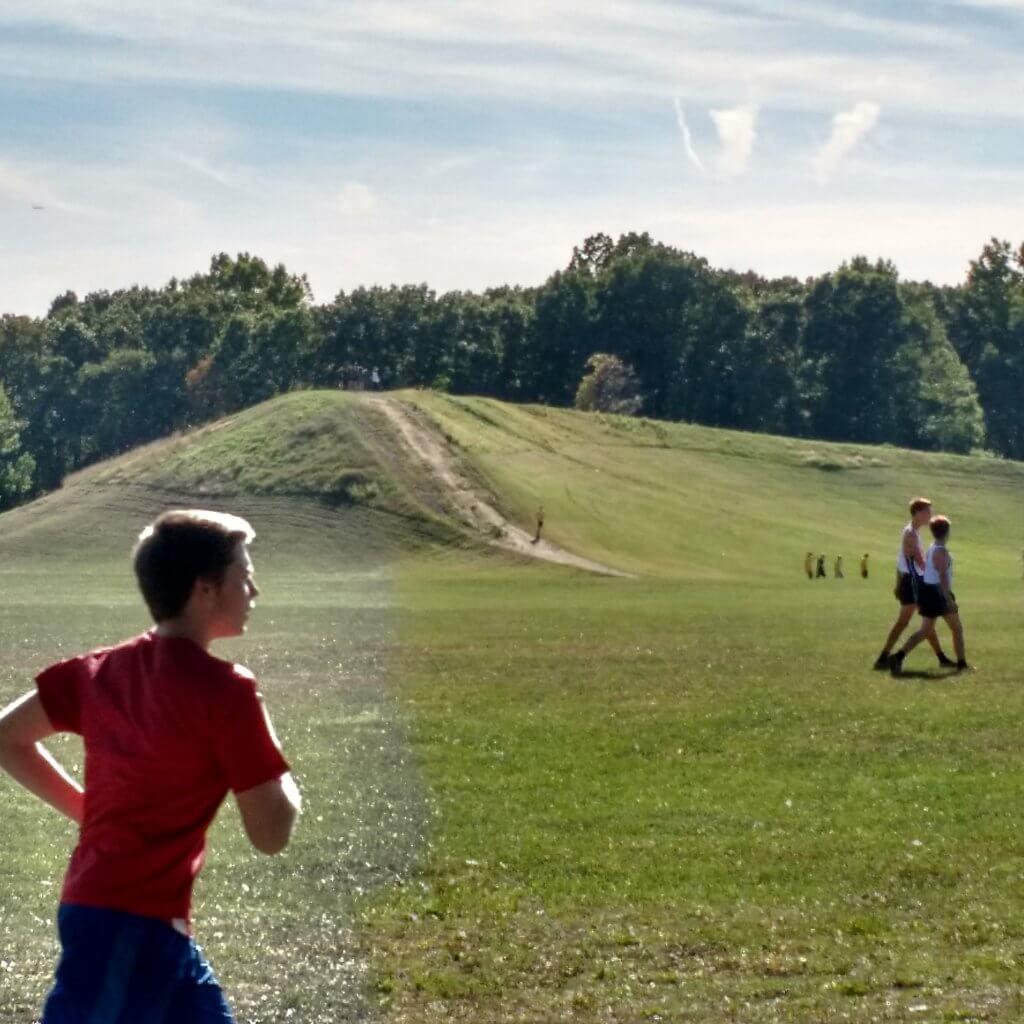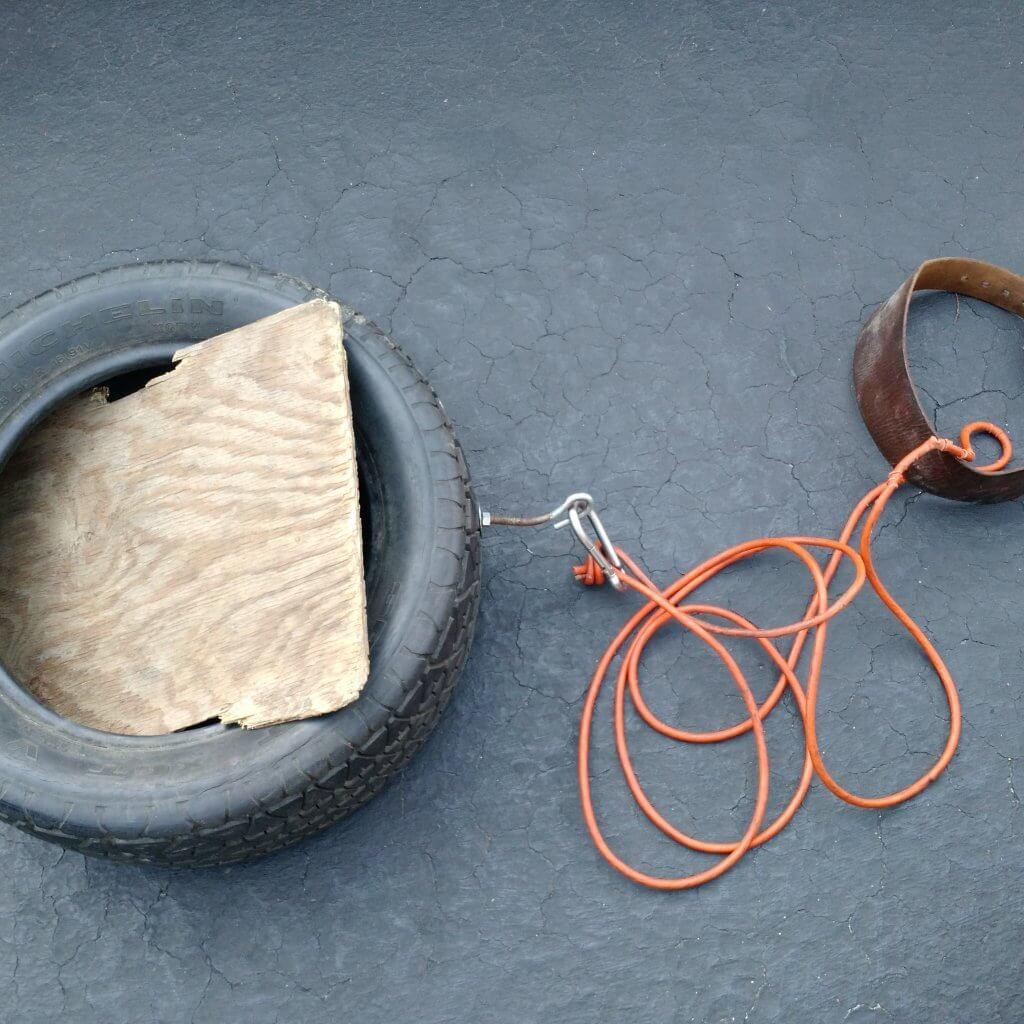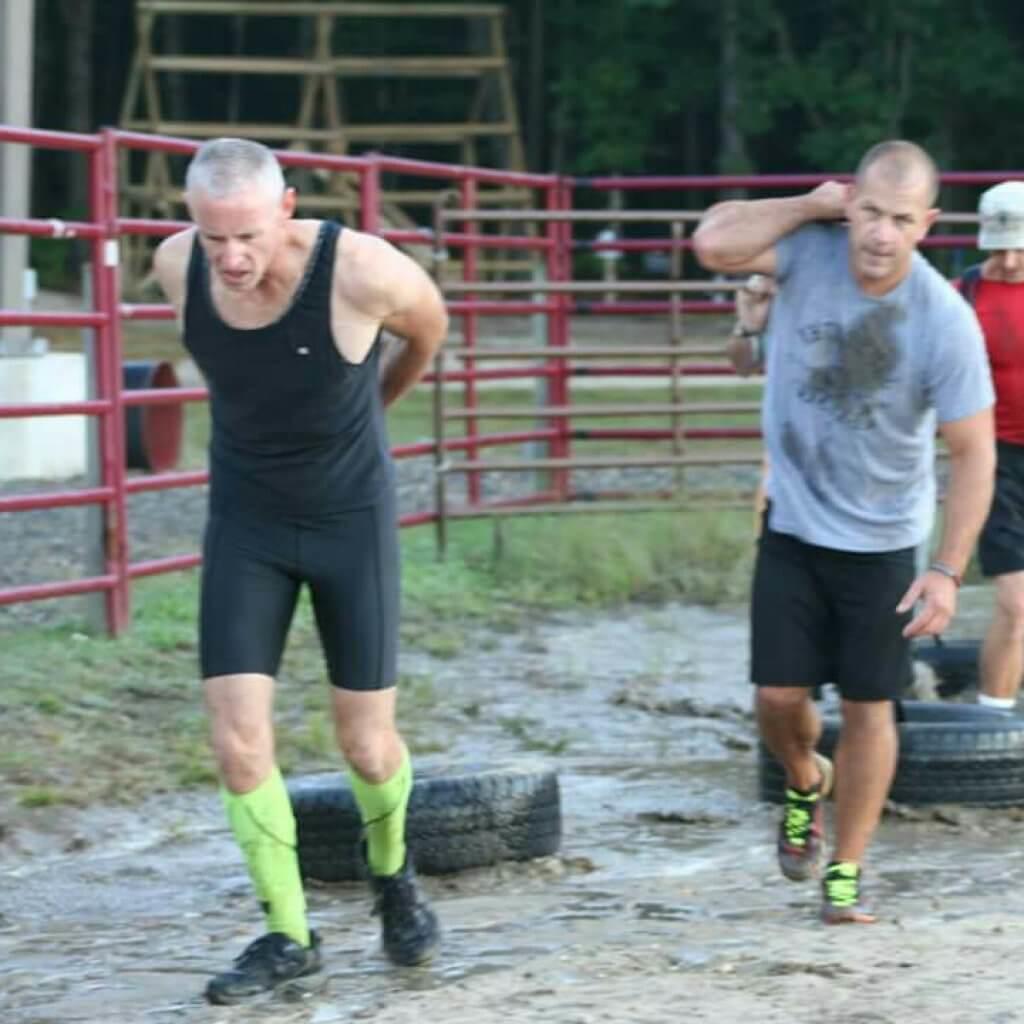Tired of Losing? How Flatlanders Use Tires to Train for Hills

Little Hill, Run, Repeat
In some flat parts of the country, towns actually build up little hills so kids can go sledding in the winter. The rest of the year, runners go up and down these bumps repeatedly in order to get their hill training. But, there is a better, more efficient, less boring trick to hill training for flatlanders.

An Accidental Discovery
I accidentally “discovered” it for myself about four years ago while surfing the Runner’s World news. There’s Junyong Pak, Tough Mudder competitor, dragging a tire. But why? The article covered so much but not enough on this particular technique. Then I met Charles “Jazz” Vassallo. He’s from Brooklyn. That New York City borough is even flatter than my New Jersey town. “Jazz” podiumed nearly every single Master’s division OCR race this past season. Most of those races were on big mountains. His secret was dragging a tire all over Brooklyn, often with his little daughter nestled on top of it.
The tire drag is almost the perfect equalizer for those who live in hilly/mountain country. The only thing not afforded a flatlander is acclimatization to elevation. Nevertheless, dragging a tire around town will absolutely blast your lungs and your legs. The technique has a long way to catch on as I still see so many flatland runners gassed early on the hills.

Where to Find a Tire and How to Set it Up
The great thing about tire training is that it is free and pretty much unlimited for where you can do it. I grabbed my tire from a dump. The connector is an old extension cord. My belt I have had since I was sixteen. A piece of junk plywood jammed into the tire lets me add weight if desired. At six-foot one and 185 pounds, my tire weighs about 35 pounds. That’s a pretty good ratio. You want to find one not too light so you get too little resistance, not too heavy that you can’t even move it. I had plenty to choose from at my local tire dump.

Proper Form
Besides hill training, dragging a tire also helps runners to improve their level form. The resistance forces you to lean into the run, just like you would lean into running uphill. The only difference here is you don’t want to lean too much. And most importantly, whether leaning into a hill or a flat run, you must lean from the ankles, not the hips. I won’t go into the form here because I leave that to the pros like my friend Richard Diaz of Diaz Human Performance.
The formula is simple. The heavier the tire, the greater the simulated angle of the hill, the more you have to lean in. The more you have to lean in, shorten your stride and increase your cadence. This helps prevent foot landing too far in front of the center of mass of your body. That in turn helps to prevent knee issues due to hyperextension led by heel striking. The good news is that the lean almost forces this good form. Arm swing should drive forward and upward meaning your elbows should not swing back beyond your body. Like your stride, your arm swing is now shorter. This extra momentum helps keep your body square to the line of attack, giving you that extra edge of speed.
Workout Variety
As with any running workout, you can mix it up with the tire too. Intervals, sprints, and distance/endurance are my favorites as they simulate the kinds of races I run. But let’s face it – some folks just don’t like dragging the old ball and chain around. What other alternatives are there to the free tire? Logs, rocks, and iron bars come to mind. They can also be free. But I suspect you want something cleaner.

Downhill Training
The treadmill offers inclines typically up to 15%. That’s great for sustained endurance running. It also works well for downhill training. In fact, whether you use the tire or the treadmill, I strongly recommend training the downhill part too. On the treadmill this is obvious. Just turn around. With the tire, just turn around. Now your footfall is pretty much a toe strike just as if you are running downhill. You’ll know you have the form right if you lean back just a bit (lean from the ankles again, not the hips) and you feel the burn in your quads.
Single Track Training
Running single track hills is not all up and down. There is a lot of staccato footwork involved. So incorporate that into your tire dragging by simply turning sideways and running crossovers front, back, and karaoke style. Work both sides. For me this requires just a short stop to adjust my belt. However, if you chose a shoulder harness instead, this may be a bit more difficult because you can’t move the attachment. You can fix this by making your attachment adjustable using a carabiner clip.
That clip also makes for quick release so I can drop the tire at any time to do sprints or anything else like climbing over obstacles.
I don’t see a lot of people around my town dragging tires. They are satisfied with the 80-foot hill repeats. Quite frankly, dragging a tire just isn’t sexy. But it does work. Pak and “Jazz” are proof of that. I’m a big fan of free when it comes to training. We spend enough of our budget on sneakers and race fees. My advice is since we love running outdoors so much, and since we are free to run just about anywhere we want to, why limit your hill training to boring indoor treadmills? Get a tire, some rope, and a belt, and make yourself unbeatable.
Latest Articles
 Is It OK to Use Trail Running Shoes on the Road?While trail running shoes can be used on roads, especially in situations where a runner encounters mixed terrains or pref...
Is It OK to Use Trail Running Shoes on the Road?While trail running shoes can be used on roads, especially in situations where a runner encounters mixed terrains or pref... Is Running on a Treadmill Easier Than Running Outside?Runners have their own preferences, whether it is treadmill running, running outside on the road, or exploring trails. So...
Is Running on a Treadmill Easier Than Running Outside?Runners have their own preferences, whether it is treadmill running, running outside on the road, or exploring trails. So... How to Fix Sore Quads After Running?Rest, ice, gentle stretching, and over-the-counter pain relievers can help soothe sore quads after running. Also, ensure ...
How to Fix Sore Quads After Running?Rest, ice, gentle stretching, and over-the-counter pain relievers can help soothe sore quads after running. Also, ensure ... 10 Fruits With The Most Electrolytes to Replace Sports DrinksThese fruits are high in electrolytes such as potassium, magnesium, and calcium, essential for hydration, muscle function...
10 Fruits With The Most Electrolytes to Replace Sports DrinksThese fruits are high in electrolytes such as potassium, magnesium, and calcium, essential for hydration, muscle function...

